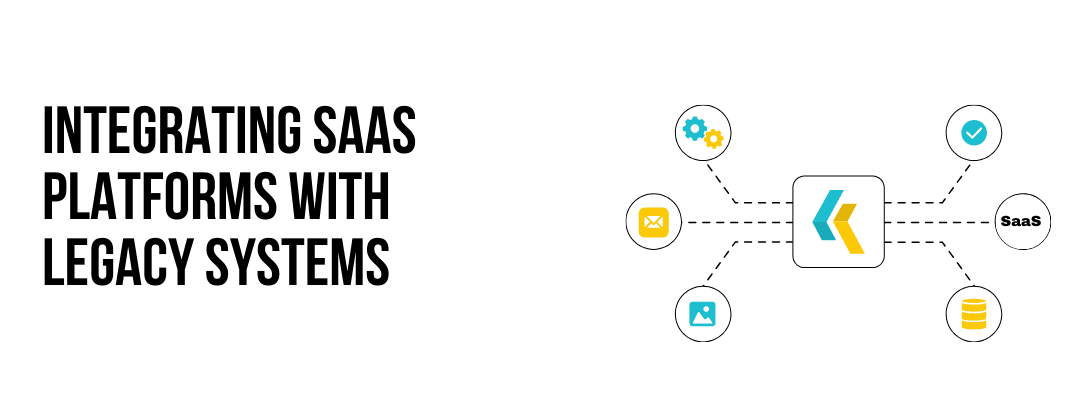SaaS platforms to streamline operations, enhance productivity, and reduce costs. However, many organizations still rely on legacy systems older software or hardware that remains in use despite the availability of more modern alternatives. Integrating these SaaS platforms with legacy systems can be a daunting task, filled with challenges.
Why Integrate SaaS with Legacy Systems?
As businesses grow, they often accumulate various systems and applications that have been developed over time. While SaaS platforms offer the latest functionalities, cloud-based solutions, and scalability, legacy systems can still hold valuable data and processes. Integrating these systems allows organizations to:
- Organizations can maximize their return on investment (ROI) by utilizing existing systems and data.
- Seamless integration enables real-time data exchange, improving decision-making and operational efficiency.
- By merging customer data from legacy systems with SaaS platforms, businesses can provide more personalized and efficient services.

Challenges of Integration
1. Compatibility Issues
One of the foremost challenges of integrating SaaS platforms with legacy systems is compatibility. Legacy systems are often built on outdated technologies that may not support modern APIs or web services commonly used by SaaS platforms. This incompatibility can lead to data silos and hinder effective communication between systems.
2. Data Migration Complexity
Migrating data from legacy systems to a new SaaS platform can be a complex and time-consuming process. Organizations often face challenges such as data inconsistency, data format differences, and incomplete data. Ensuring a smooth data migration requires careful planning and execution.
3. Security Concerns
Integrating cloud-based SaaS solutions with legacy systems can raise significant security concerns. Legacy systems may not have the latest security measures in place, making them vulnerable to cyberattacks. This integration can expose sensitive data to risks if not managed properly.
4. Resistance to Change
Employees accustomed to legacy systems may resist adopting new SaaS platforms, leading to a lack of user adoption. This resistance can stem from fear of the unknown, a lack of training, or simply being comfortable with established processes.
5. Resource Constraints
Integrating SaaS platforms with legacy systems often requires skilled resources, which can be scarce. Organizations may face challenges in finding the right talent with the necessary expertise in both legacy and modern systems.
Practices for Successful Integration
1. Conduct a Thorough Assessment
Before starting the integration process, organizations should conduct a complete assessment of their existing legacy systems and the SaaS platforms they wish to implement. This assessment should include:
- Determine which legacy systems are critical for business operations and which can be phased out.
- Analyze what data needs to be integrated and how it will be used in the new SaaS platform.
- Check for compatibility between the legacy systems and the SaaS platforms.
2. Develop a Clear Integration Strategy
Having a well-defined integration strategy is crucial for success. This strategy should outline:
- Specify what you hope to achieve with the integration, such as improved data flow, enhanced user experience, or cost savings.
- Create a timeline that includes key milestones for the integration process.
- Identify the necessary resources, including skilled personnel, budget, and tools.
3. Prioritize Data Quality
Data quality is paramount during integration. Organizations should focus on:
- Remove duplicate or irrelevant data from legacy systems to ensure a smooth migration process.
- Establish a clear mapping of how data from legacy systems will translate to the new SaaS platform.
- Implement data validation processes to ensure accuracy and consistency during migration.
4. Implement Security Measures
Security should be a top priority when integrating SaaS platforms with legacy systems. Organizations can enhance security by:
- Regularly assess the security vulnerabilities of both legacy systems and SaaS platforms.
- Limit access to sensitive data and ensure that only authorized personnel can access critical systems.
- Use encryption to protect data in transit and at rest.
5. Foster User Adoption
To overcome resistance to change, organizations should invest in user adoption strategies, including:
- Provide complete training to employees on how to use the new SaaS platform and its benefits.
- Implement a change management process that addresses employee concerns and encourages a positive outlook toward integration.
- Create channels for employees to provide feedback on the new system, helping to identify areas for improvement.
6. Choose the Right Integration Tools
There are numerous integration tools available that can facilitate the integration process. Organizations should evaluate options based on:
- Ensure that the tool supports both legacy systems and the chosen SaaS platforms.
- Select tools that are user-friendly and require minimal technical expertise.
- Choose tools that can scale as the organization grows and integrates more systems in the future.
7. Monitor and Optimize
After the integration is complete, organizations should continuously monitor the performance of the integrated systems. Key steps include:
- Establish key performance indicators (KPIs) to assess the effectiveness of the integration.
- Conduct regular audits to identify any potential issues or areas for improvement.
- Be open to making iterative improvements based on feedback and performance data.
Integrating SaaS platforms with legacy systems can be challenging, but with careful planning, clear strategies, and the right tools, organizations can achieve a successful integration that maximizes their technology investments. By understanding the challenges and following best practices, businesses can enhance data flow, improve operational efficiency, and ultimately drive growth in an increasingly digital landscape.





